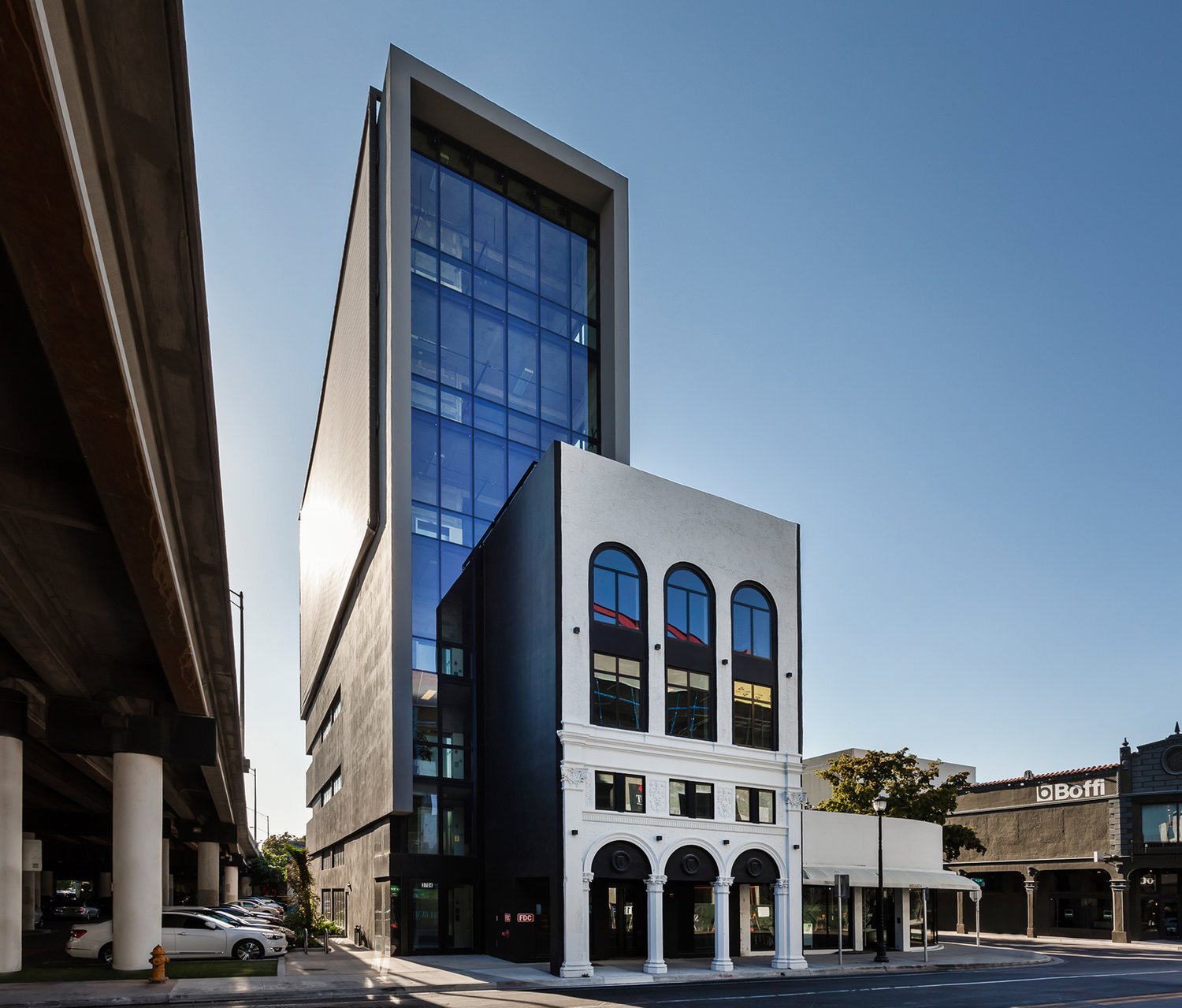
October 3, 2017
Memory in the 21st Century City
A Q&A with Shulman + Associates on the importance of historical perspective in Miami’s architecture.
For the past three years Metropolis’s director of design innovation, Susan S. Szenasy, has been leading Think Tank, a series of discussions with industry leaders on important issues surrounding human-centered design. Recently, she moderated a panel at Shulman + Associates in Miami, Florida, which included architects, a business owner and cultural critic. The panel focused on the role of memory in 21st century urban design, particularly in a city that seems to live in the now. What follows is an edited transcript of the conversation prepared by Bailey McCann.
Susan S. Szenasy, director of design innovation, Metropolis (SSS): Our topic today is memory in the 21st-century city. What is the meaning of place in an environment that is constantly changing. How do we hold on to the history of a city and develop for the needs of today? Allan let’s start with you.
Allan Shulman, principal, Shulman + Associates (AS): Since I arrived in South Florida back in 1991, to do a graduate degree at the University of Miami, I have been intrigued by the idea of memory in this city. Miami is a modern city that is very rich and layered. As a grad student, I started working on the idea of urban assemblage. It suggests that as a city grows, rather than constantly replacing itself, its existing layers are assembled and new layers added to them–you end up with a rich mosaic. My interest in memory is really a lot about how the urbanism of a city comes together. We’ve made that thesis much of our work.
SSS: The idea of assemblage, really touches on the history of Miami. That brings me to you Alyssa, you deal directly with this issue of how the city is maturing.
Alyssa Kriplen, associate partner, Shulman + Associates (AK): I’ve been with Shulman for about five years now. Prior to that I have worked in many places, Melbourne, San Francisco, New York and now Miami. None of those cities are necessarily new historical cities, but Miami I think, is the youngest of those. Each city has a different degree of how it uses memory and understands of memory. New York for example, is very prescriptive about historic preservation. Whereas Miami is more accepting about how to infill the city. I think that creativity and design can be born and shaped by historical memory and an understanding of the city and the site.
SSS: Jonathan, as a business owner, how do you think about memory?
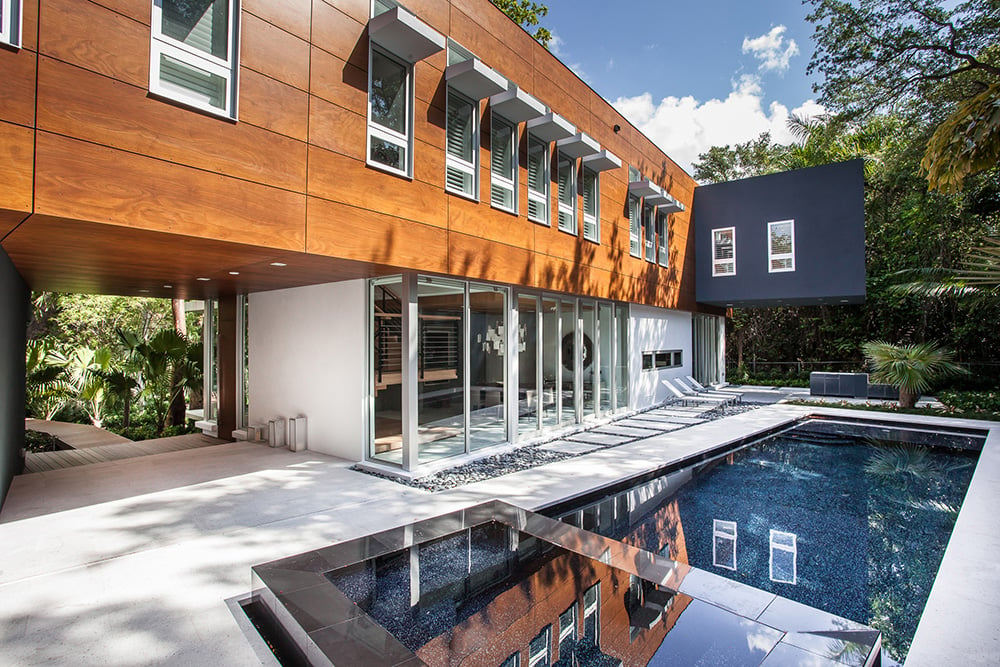
Jonathan Plutzik, owner, The Betsy Hotel (JP): I have a mother who is 97 years old. She came to this country in the 1920s when she was 2 with her grandfather who was 86. She still talks about sabbath dinners she had with this man who was born in the 1850s. Think about that for a moment. I know that we are talking about buildings today, but one of the things I’m also preoccupied with in this discussion is how people gather. What I’m struck by is that when we’re successful with a building, we create spaces where people want to come and talk to each other. Generally, those conversations are about memory.
SSS: Now we have a writer and a critic. Alastair is someone who looks at architecture in the way that most of us don’t – he evaluates the place and its service, not just the form.
Alastair Gordon, writer & critic (AG): Yes, I am a critic. I am a culturalist American. I’ve been here for about eight years trying to figure this place out. I go back to Joan Didion’s book from 1987, Miami, which was basically about the Cuban impact after the Mariel boatlift. Her first impression when she got here in1985 was what she called “liquidity”. She described the way the light was so liquid, even the buildings didn’t seem to stand still, edges seemed to lose definition. I became fascinated with this idea of liquidity and what that means in a city’s identity. In the book I’m working on now about Miami, I’m really tracing this notion of memory here, the memory of the Everglades or of the mangroves. Both defined this place, but then the mangroves were ripped out to create Miami Beach. All of that to me is fascinating because it ties into how the city has evolved and I think it’s one of the missing narratives within the broader view of Miami today.
SSS: Is there any talk about re-instituting the mangroves?
AG: Well, one way we can address it in terms of recent history is if you talk to Jacques Herzog, when Herzog and Demeuron were working on the Perez Art Museum, their main influence there was the mangrove. They were studying the Keys, doing studies of the mangroves and those forms. The studies became floor plates. They end up being this sort of peanut shape that had the memory of the islands and the mangroves in them. The new Jean Ivell project, called Monad Terrace, is another example. He’s introducing a saltwater lagoon with native wild plants, so the building sort of edges in around that lagoon. He’s inviting the Everglades back in a sense.
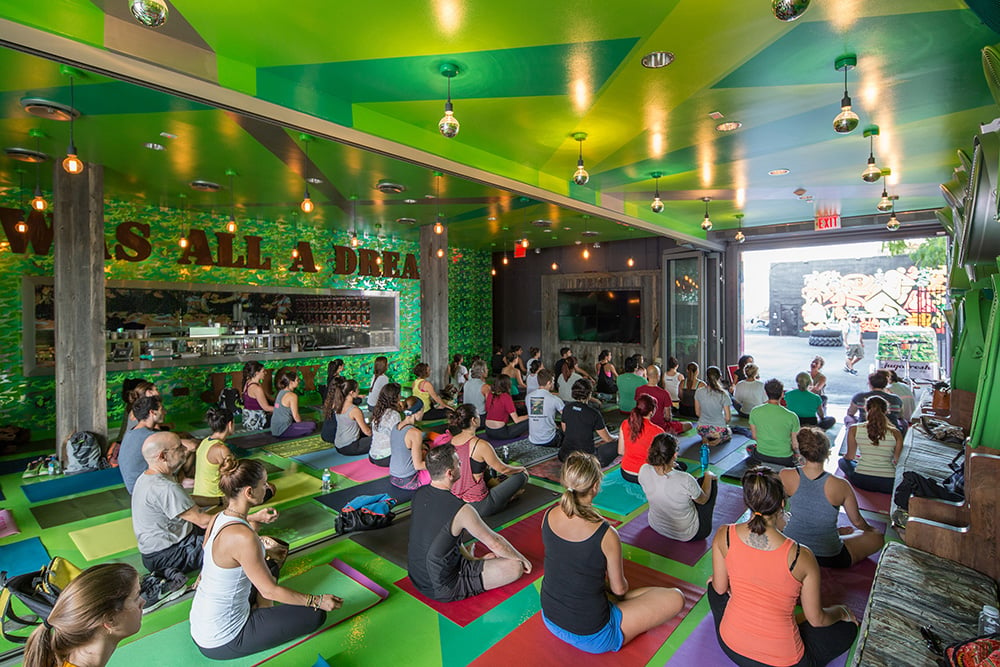
SSS: That’s a wonderful example because those projects are incredibly important pieces of architecture for the city and they could be studied as more than just buildings. You mentioned the Joan Didion book and the Cuban immigration. There are very distinct cultures here that have developed here over the years. How does that become part of the memory of the city going forward?
AG: Miami still has a significant income disparity. You have billionaires on the beach and you have people living on $10 dollars a week, literally, in other parts of the city. That’s what all of us are concerned with now. How do you marry these two very different cities? We have to think about how to make the transformation inclusive.
SSS: Miami is in a position to begin to understand the terrible toll that gentrification takes on the larger population. Can we talk about what’s going on? Allan, how do we begin to think about this issue?
AS: I think sometimes when we talk about architecture and urban issues in Miami, we’re so focused on what’s happening on the beach or in Wynwood, or the design district. There’s a large part of the city that never gets addressed. One of the keys to solving this is to strengthen neighborhood institutions. There is, on one hand, the policy part, where government regulation and zoning have an impact. On the other side is community building and making sure that everyone feels like they are part of the community and aren’t being removed to make way for something else.
SSS: I like how you think about preservation. Let’s talk about how we make a modern, historic Miami.
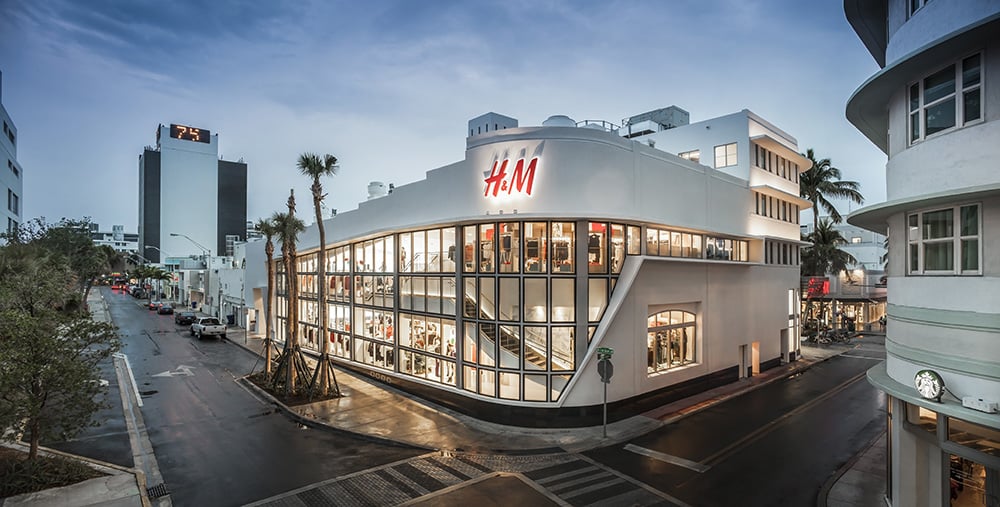
AS: We have to think of the city first with a sense of continuity. I always think that the city is this continuous thing that’s always changing, but still has an underlying continuity tying it all together. The fact that cities are grounded and that they aren’t in danger of disappearing or being overly transformed creates a space for all kinds of tiny innovations to happen, rather than a wholesale reinvention.
SSS: Alastair, you also brought up an interesting point that people come with their personal culture, their social culture, but they don’t come with their buildings. We have a tendency to develop cities in a way that isn’t always specific to who is already in a city. How can we change that?
AG: I think you have to marry the macro-vision of a place with the realities of aspirational desires. There’s a lot of clean slate thinking here. If you’re coming from the outside and you’re just thinking of building for all of the billionaires, well how many of these can there be? There is a point where cities have to rely on the benign developer. David Miller is one example where the goal of his work is more community oriented. There is also a policy angle. Boris Johnson in London, created a policy where if you were going to build luxury housing you also had to build the same proportion of affordable housing. That would be very easy to do in Miami.
SSS: In a city like Miami where you have a lot of interesting thinking about design and new people coming in, there is also a possibility of rethinking how you build in a tropical climate. How do you address the climate?
AK: At Shulman, we are thinking of the house within the tropical realm and trying to get a deeper understanding of what that means. To relate this back to memory, look at houses here that were pre-air conditioning. They have these big overhangs for shade and you can keep the doors open for more parts of the year. That house can work in a variety of environments, where you can run the air conditioning during peak humidity but you don’t have to run it all the time.
AG: I think one of the famous examples is the Perez Art Museum. If you look at the early studies that Herzog and de Meuron did, they were in a vertical competition with the downtown group of builders and they realized that was completely wrong. They started looking at the mangrove roots, they were looking at Stiltsville and decided instead to create an open and more inclusive building. The wind can blow through it, a hurricane can roll under it. They gave the city an enormous gift.
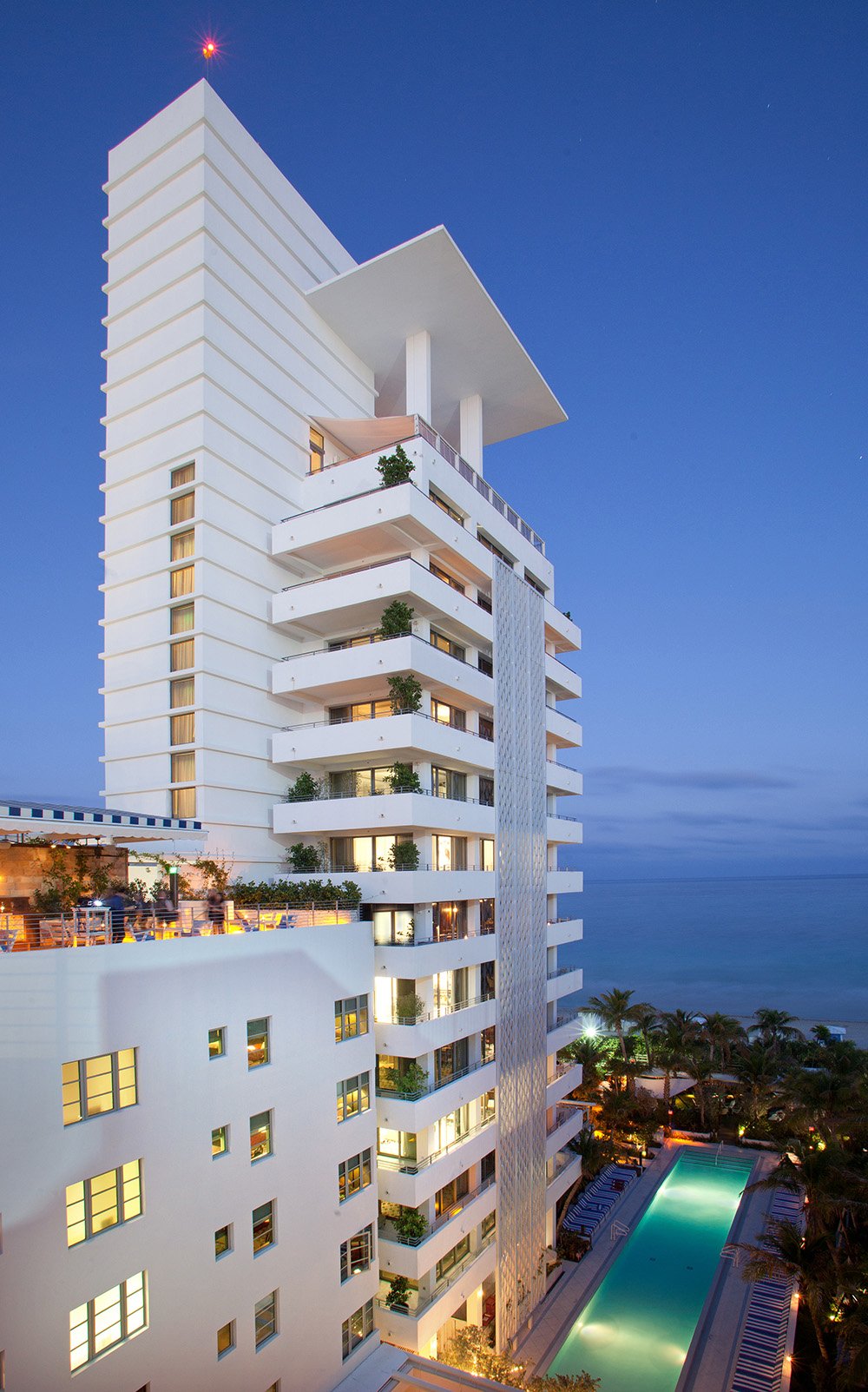
SSS: That building is a palpable example of what’s possible when we think of using memory and thinking of the community in design. It’s beautiful and is doing all the things that we need to think about. Jonathan, can you talk about how developers think about these ideas?
JP: I think developers operate for a couple reasons. One of them certainly is money, but the other, in working with good architects, is creating monuments to the community in which they operate. There are natural forces that exist around development and the evolution of places that gentrify that are really powerful. So it falls to philanthropic institutions and educational institutions to help define and inform urban environments in a more inclusive way.
SSS: Let’s talk about that memory. How do we preserve this ancient memory of the climate, the place, vegetation, the winds and the water?
AS: One of the things I have to give to Herzog and de Meuron is that they did a really good study of Miami. I feel like they not only studied the city from a climate point of view, but they looked at the buildings that have been here historically. There’s an embedded memory of ideas for how to build for the climate and of solutions that worked before. The idea of the Stilts building, and how it was constructed is probably the future of construction in many areas of Miami.
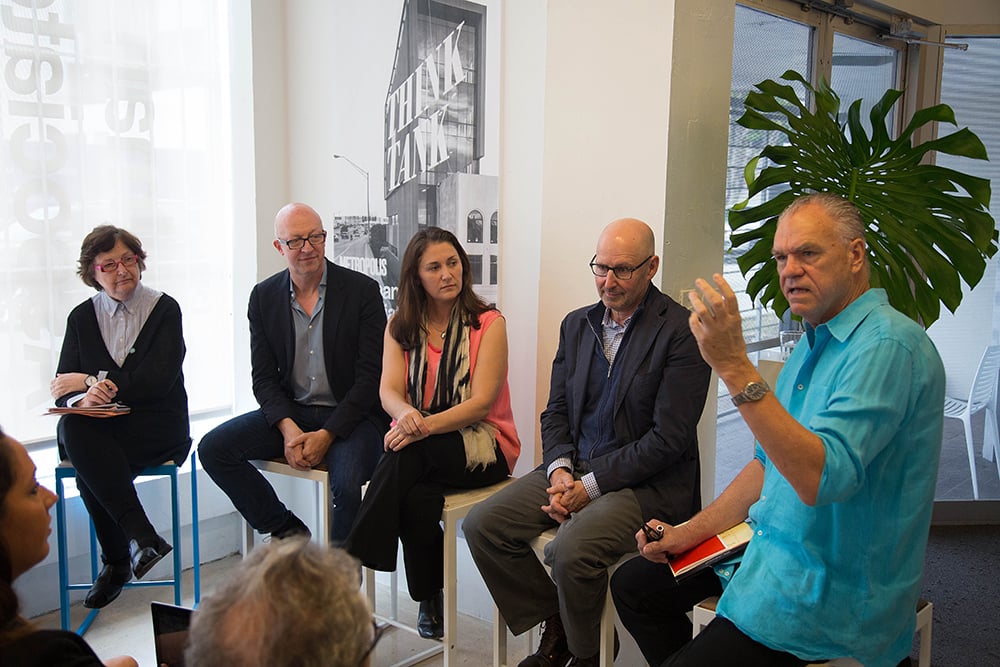
SSS: Thank you, panel. Any final thoughts on memory?
AS: Miami’s a very young city. It’s an adolescent city. But, I think it is growing up into a much more sophisticated tapestry of institutions public, private, commercial, and educational. In that sophistication is an identity question of – ‘who are we as a city?’ There is an opportunity here to think more deeply about our identity and what drives it, and to begin to construct a deeper understanding of what Miami is. Memory plays a critical role in that.
Panelists included:
Alastair Gordon, writer & critic
Alyssa Kriplen, associate partner, Shulman + Associates
Jonathan Plutzik, owner, The Betsy Hotel
Allan Shulman, principal, Shulman + Associates
Moderator:
Susan S. Szenasy, director of design innovation, Metropolis magazine.
The Metropolis Think Tank series is presented in partnership with Dupont, Sunbrella and USG.





